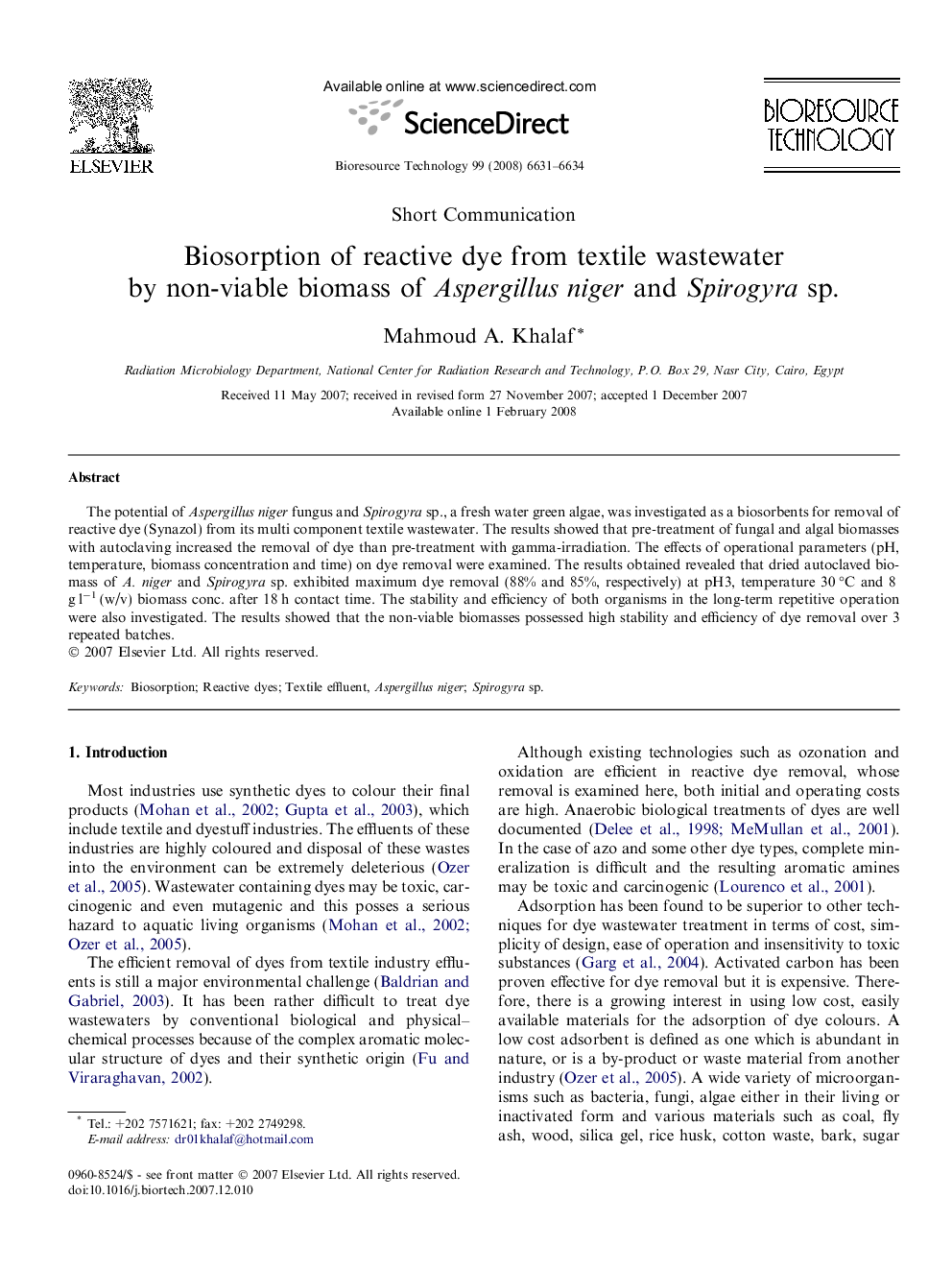| کد مقاله | کد نشریه | سال انتشار | مقاله انگلیسی | نسخه تمام متن |
|---|---|---|---|---|
| 684920 | 889029 | 2008 | 4 صفحه PDF | دانلود رایگان |

The potential of Aspergillus niger fungus and Spirogyra sp., a fresh water green algae, was investigated as a biosorbents for removal of reactive dye (Synazol) from its multi component textile wastewater. The results showed that pre-treatment of fungal and algal biomasses with autoclaving increased the removal of dye than pre-treatment with gamma-irradiation. The effects of operational parameters (pH, temperature, biomass concentration and time) on dye removal were examined. The results obtained revealed that dried autoclaved biomass of A. niger and Spirogyra sp. exhibited maximum dye removal (88% and 85%, respectively) at pH3, temperature 30 °C and 8 g l−1 (w/v) biomass conc. after 18 h contact time. The stability and efficiency of both organisms in the long-term repetitive operation were also investigated. The results showed that the non-viable biomasses possessed high stability and efficiency of dye removal over 3 repeated batches.
Journal: Bioresource Technology - Volume 99, Issue 14, September 2008, Pages 6631–6634